Abstract
Analyses of outbreaks of African horse sickness showed that movement of infected Culicoides midges on the wind was most likely responsible for the spread of the disease over the sea from Morocco to Spain in 1966, from Turkey to Cyprus in 1960, and from Senegal to the Cape Verde Islands in 1943. The pattern of spread of the epidemic in the Middle East in 1960 could have been laid down by the infected midges carried on spells of south-east winds, and analyses of outbreaks in Algeria in 1965 and India in 1960 also suggested windborne spread of the disease. Each spread occurred when the presence of virus, host and vector coincided either with a spell of winds unusual for a particular time of year (Spain, Cyprus, Cape Verde Islands and Algeria) or with a series of disturbances usual at that time of the year (Middle East and India). Inferred flight endurance of the midge varied up to at least 20 h and flight range from 40 to 700 km. Flight occurred when temperatures were likely to have been in the range of 15-25 °C if it was at night or 20 to about 40 °C if it was by day.
It is suggested that likely movements of midges on the wind can be estimated from synoptic weather charts, and should be taken into account when planning control of the disease in the face of an outbreak. Such control includes a ban on movement of horses, vaccination and spraying of insecticide.
The risk of spread to countries outside the endemic areas should be assessed by reference to possible wind dispersal of infected midges.
Full text
PDF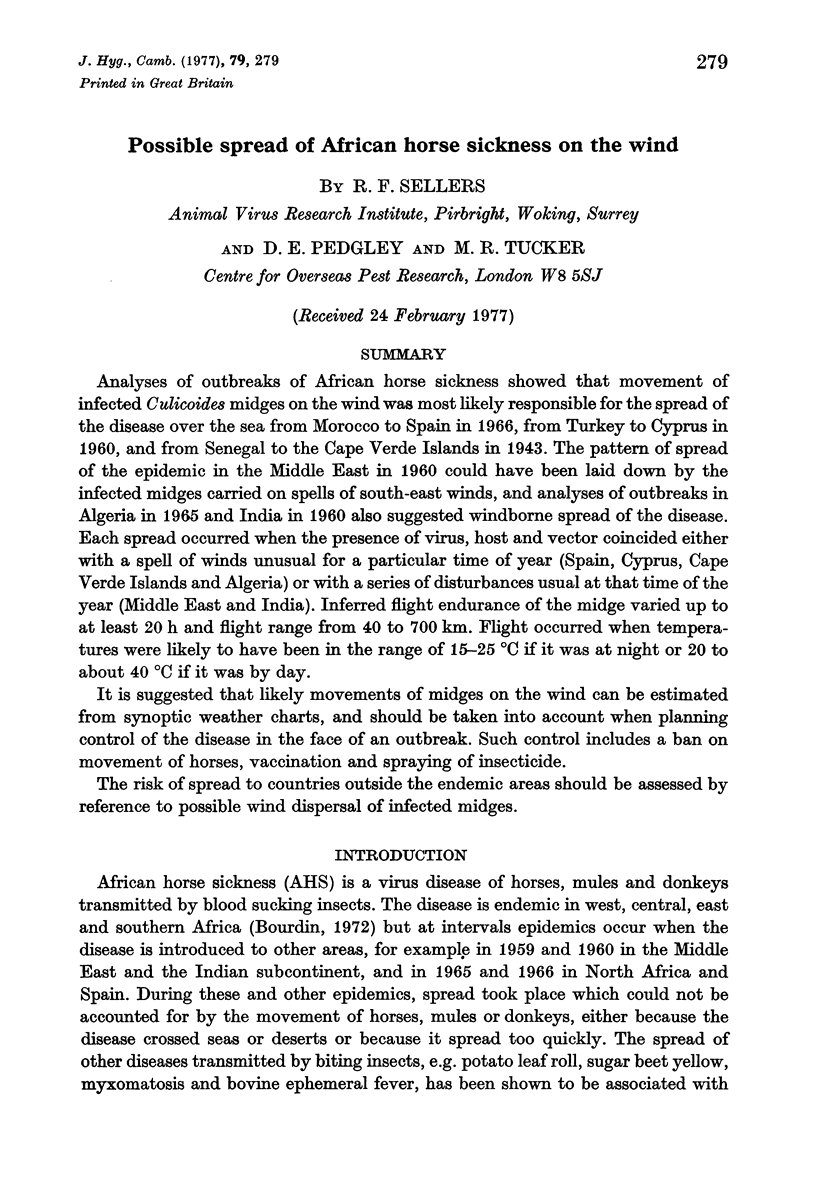
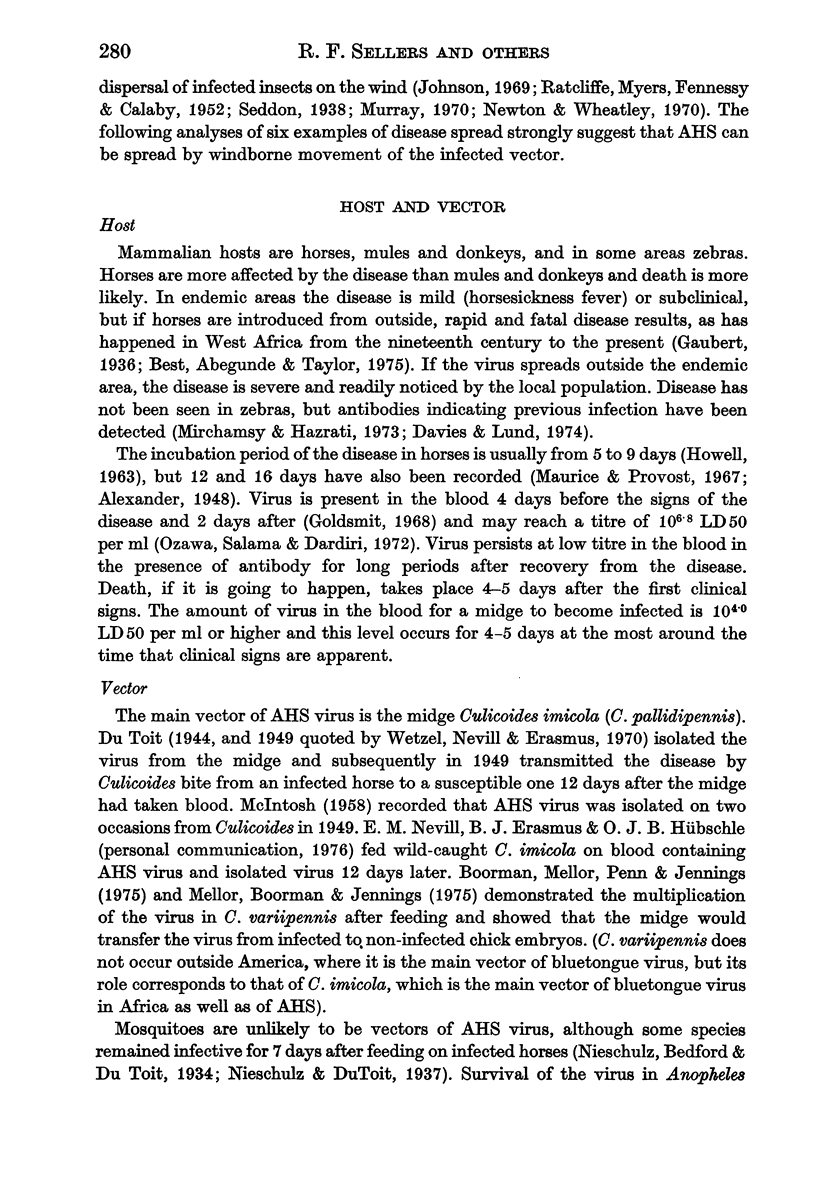
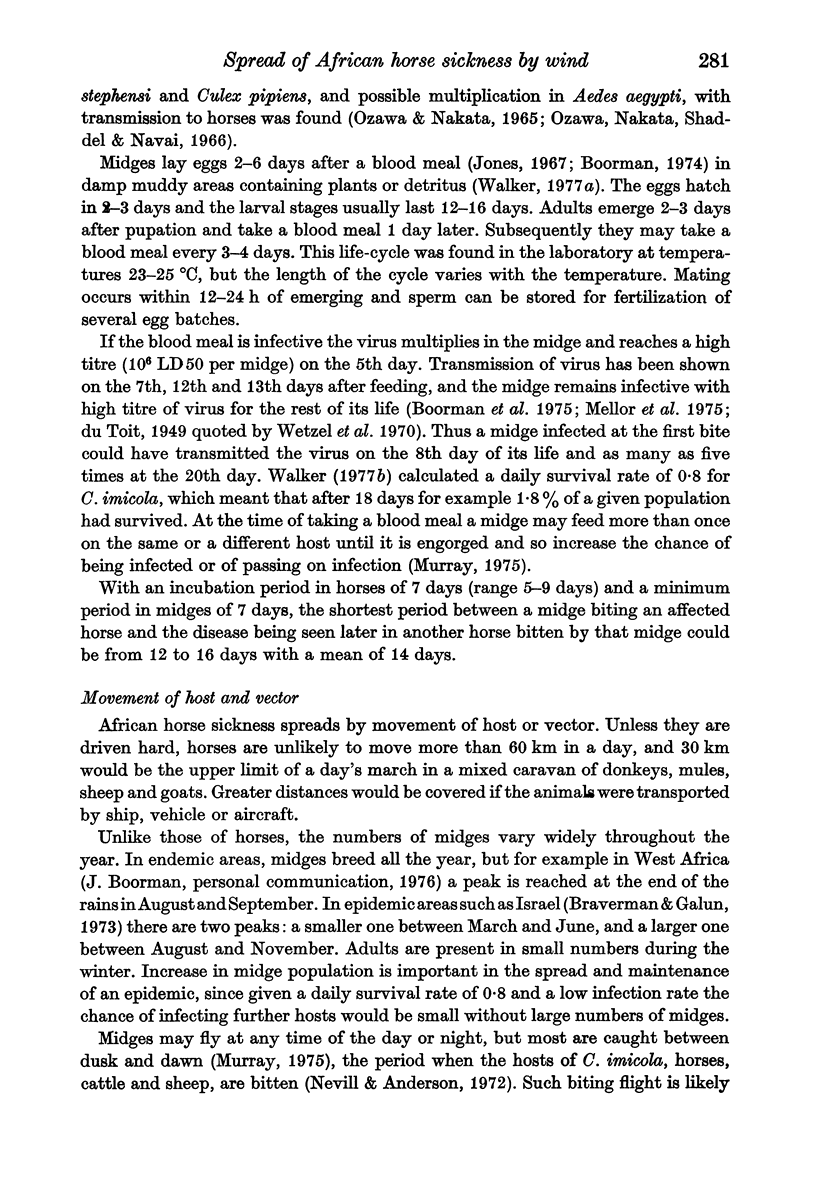
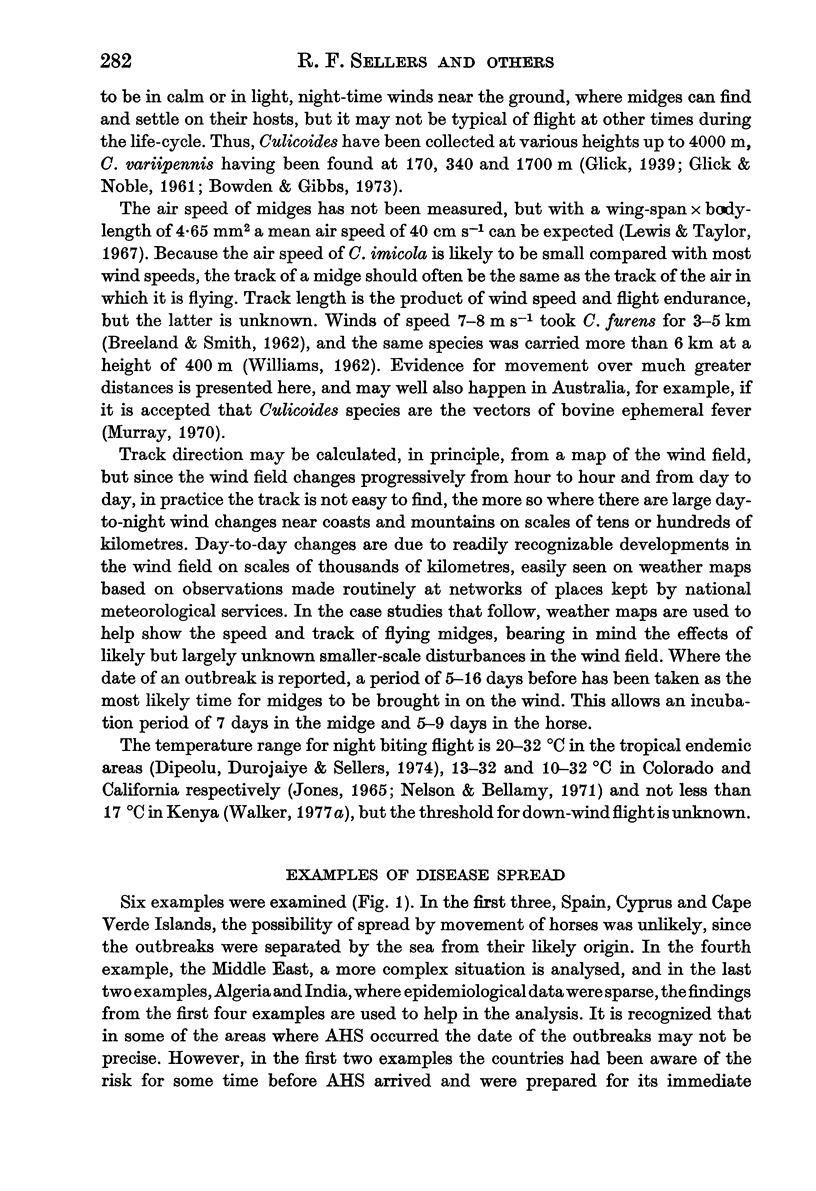
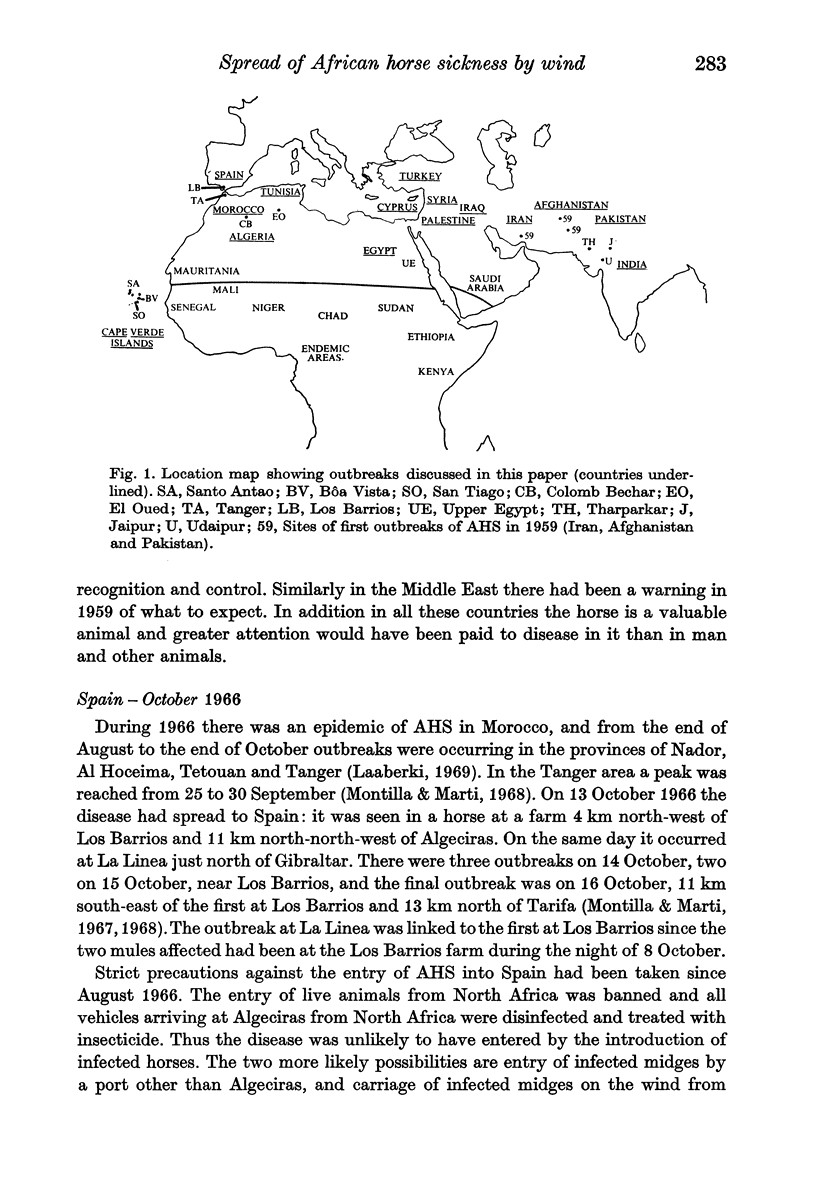
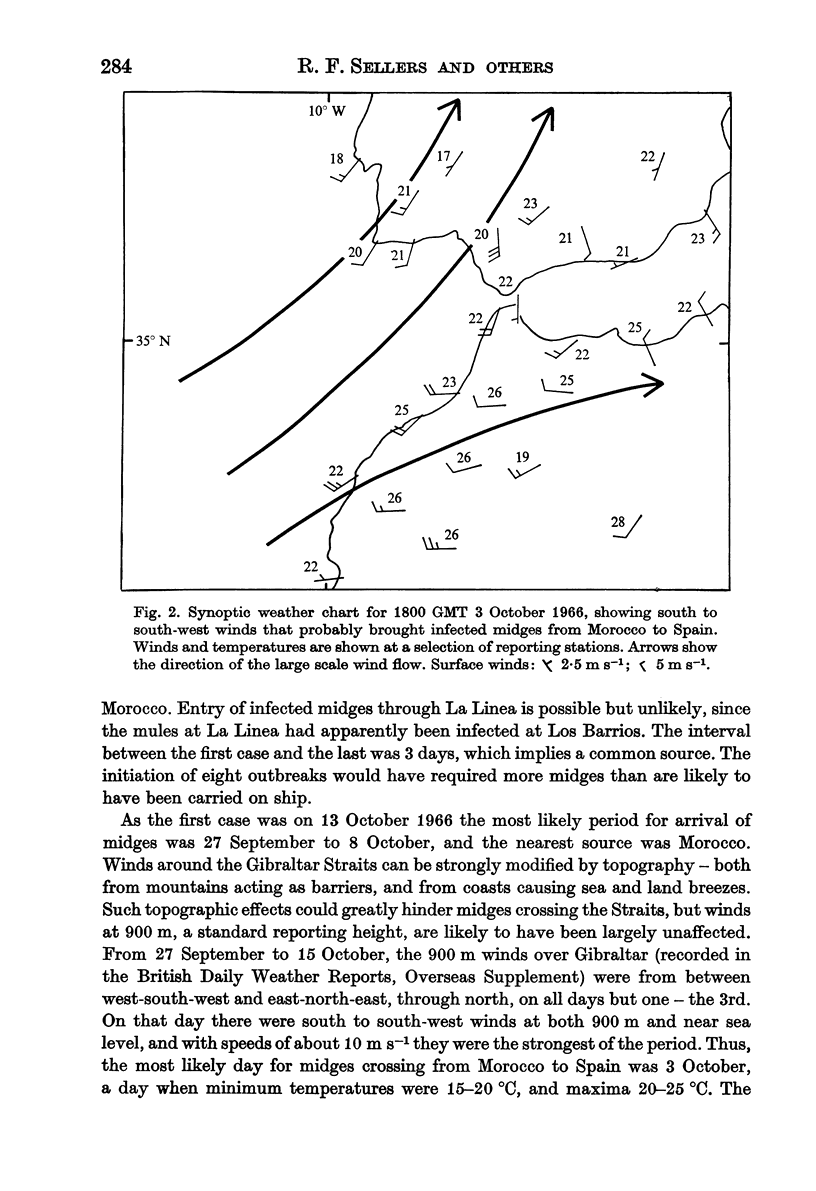
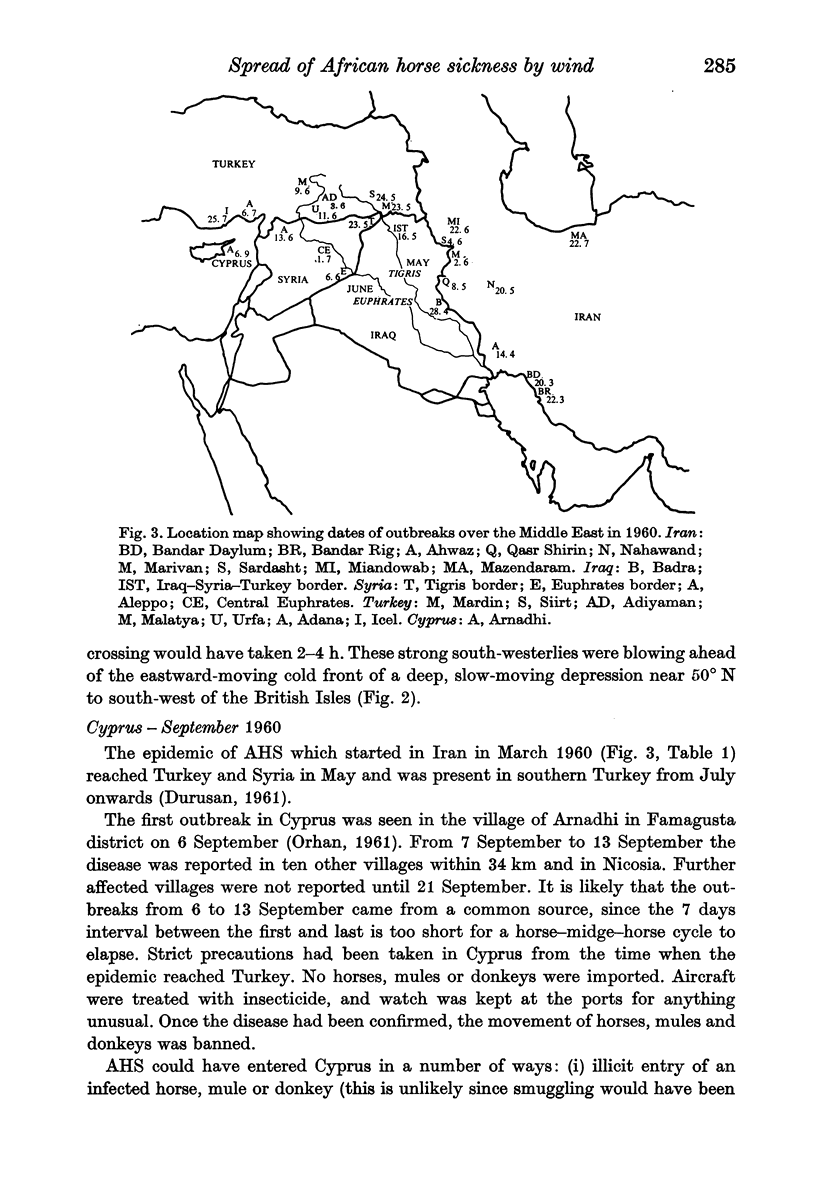
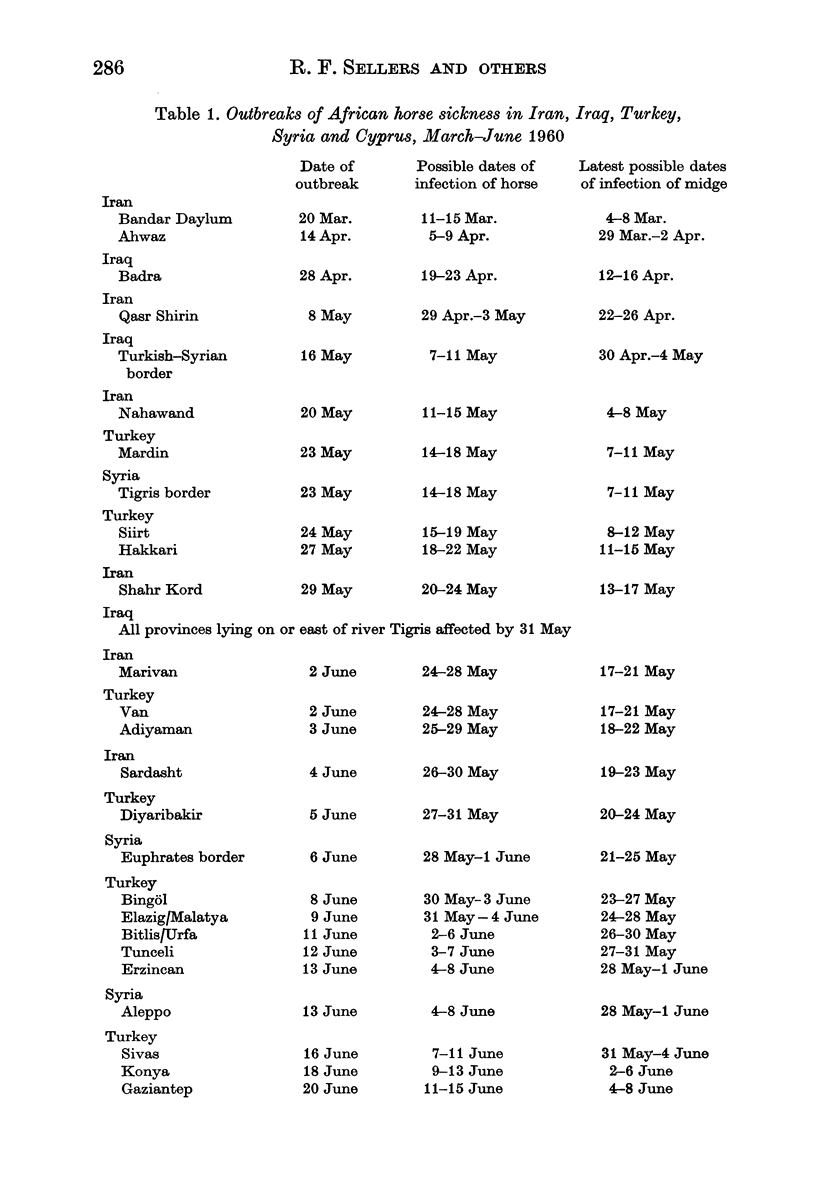
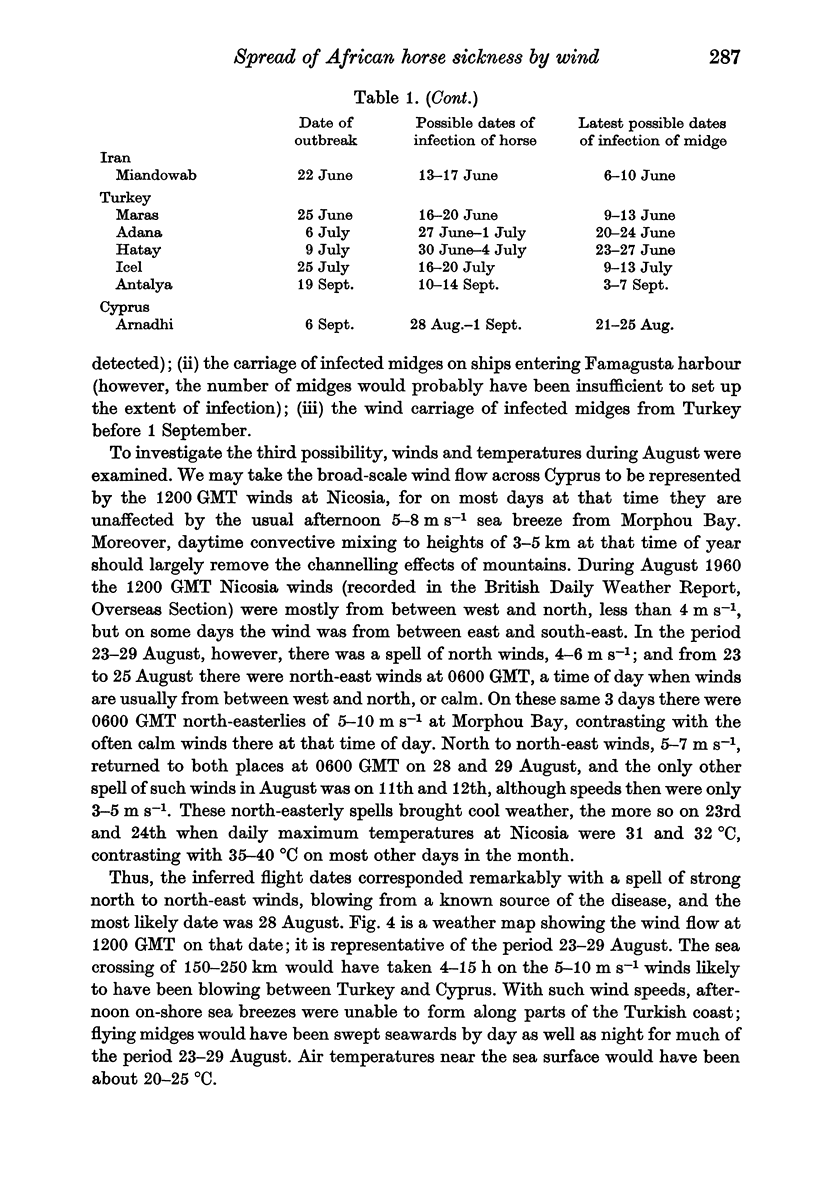
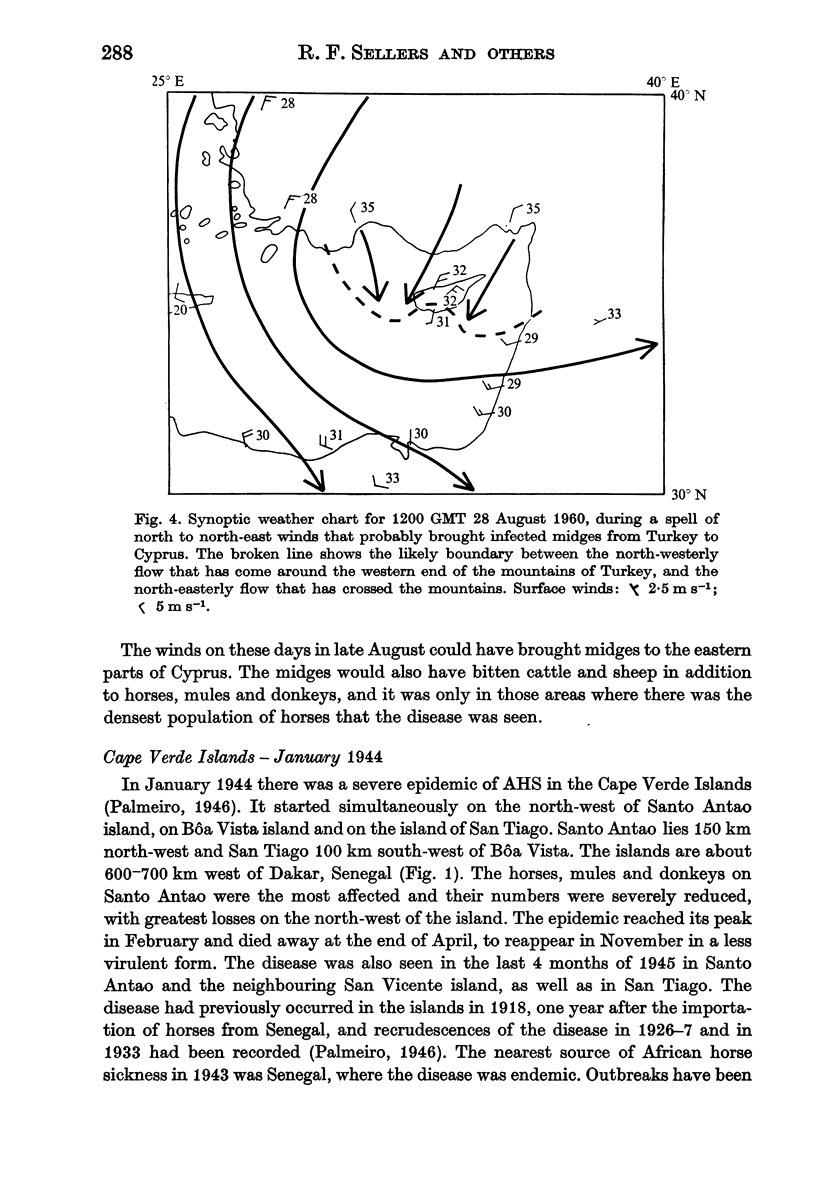
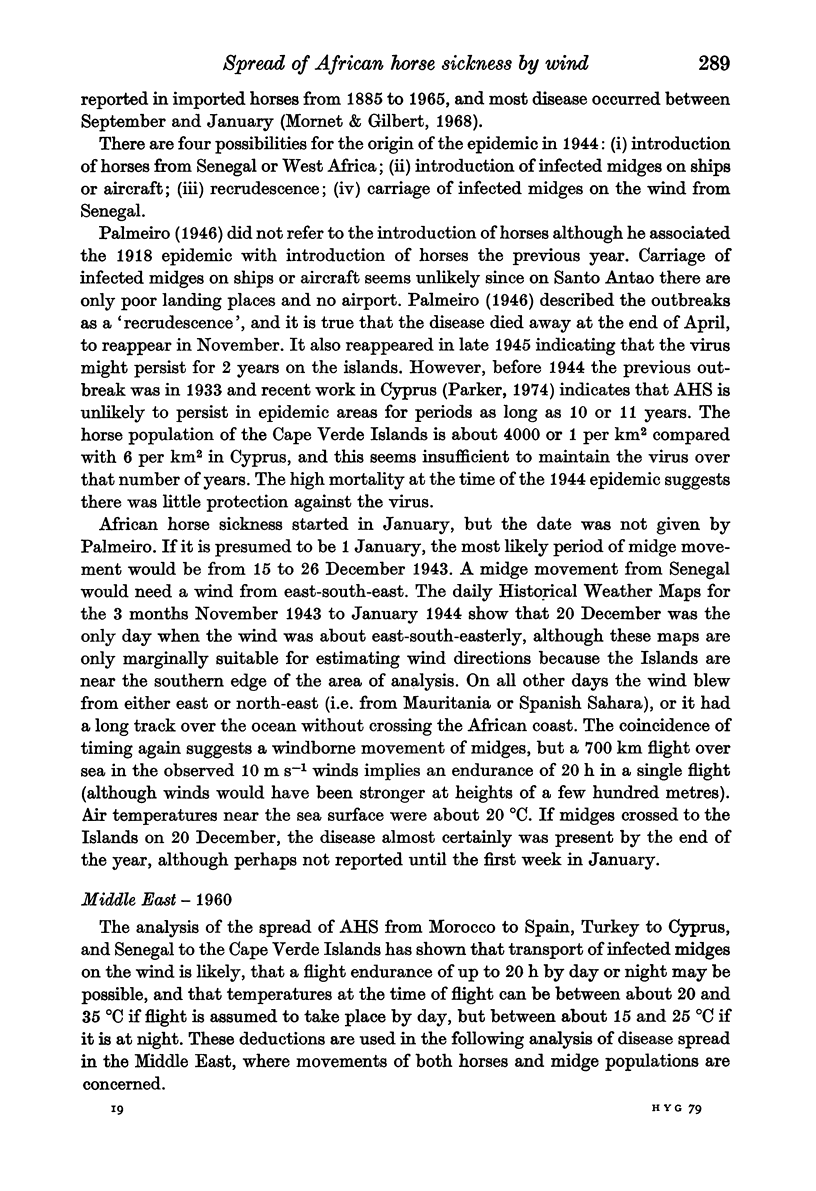
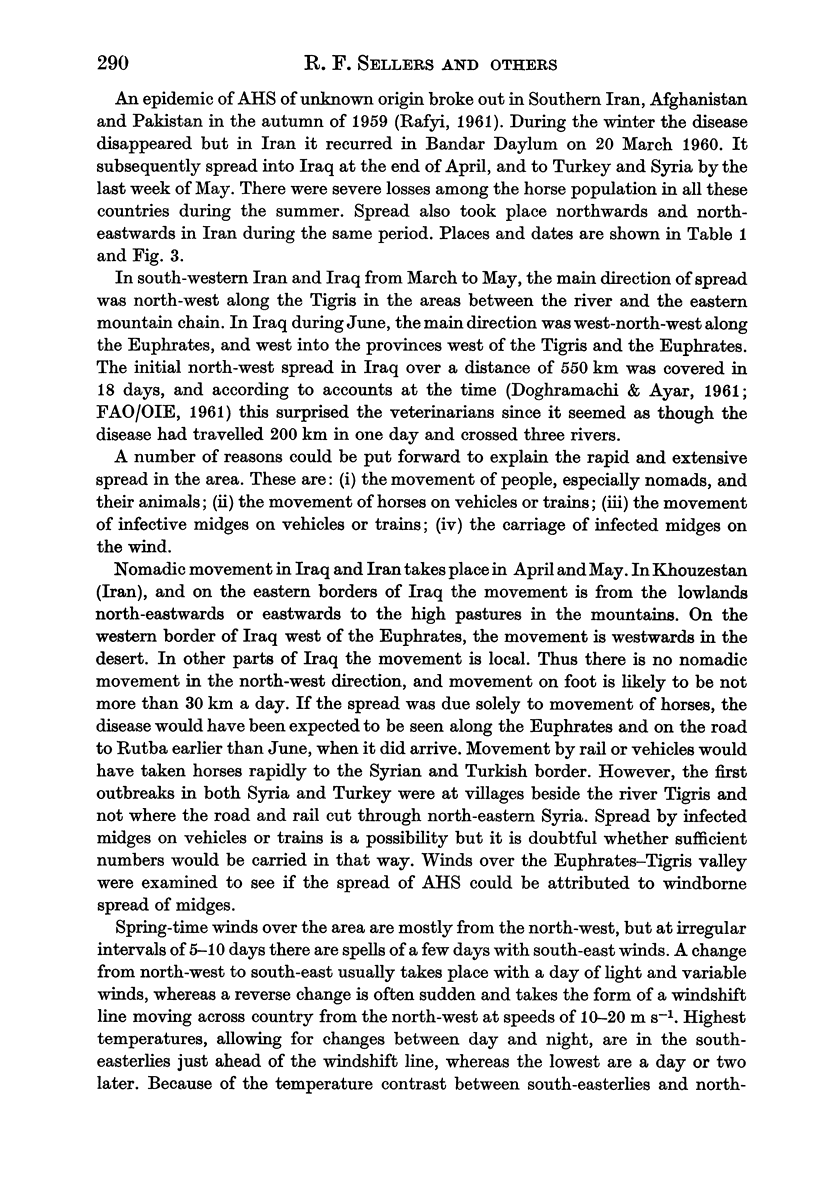
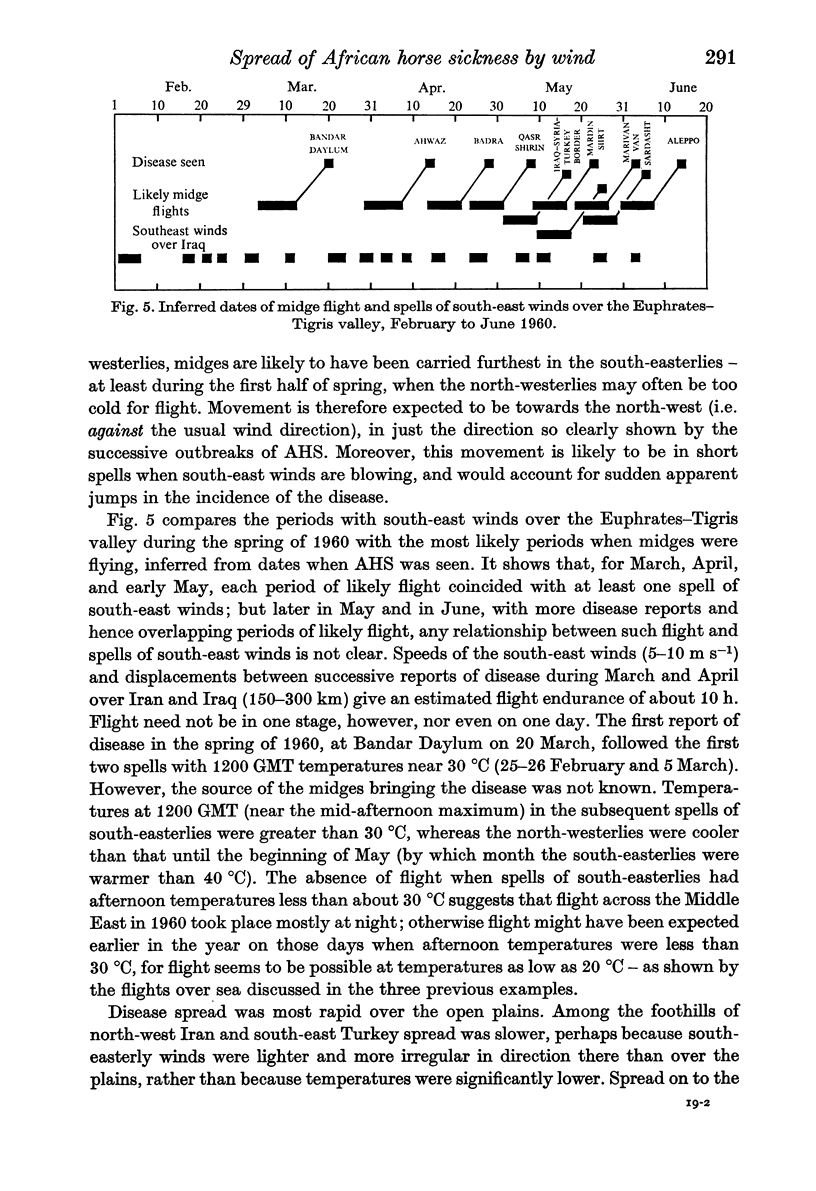
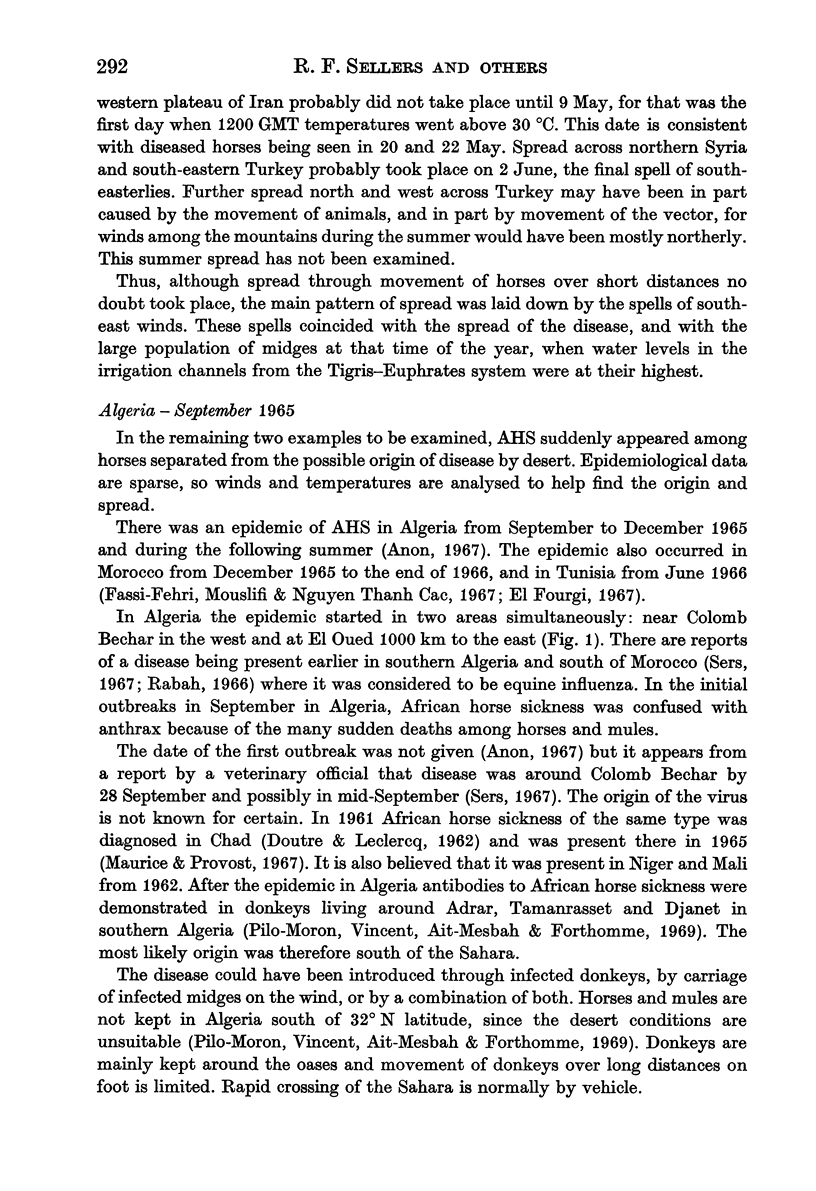
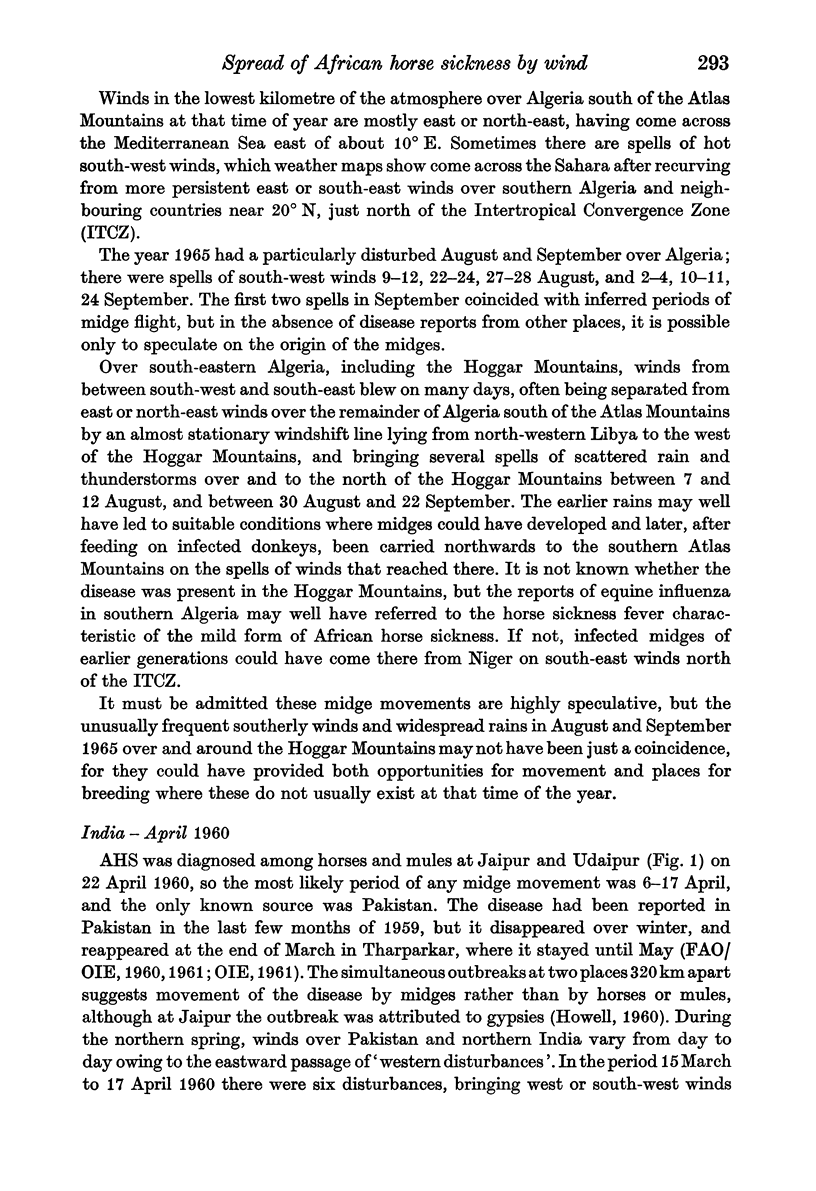
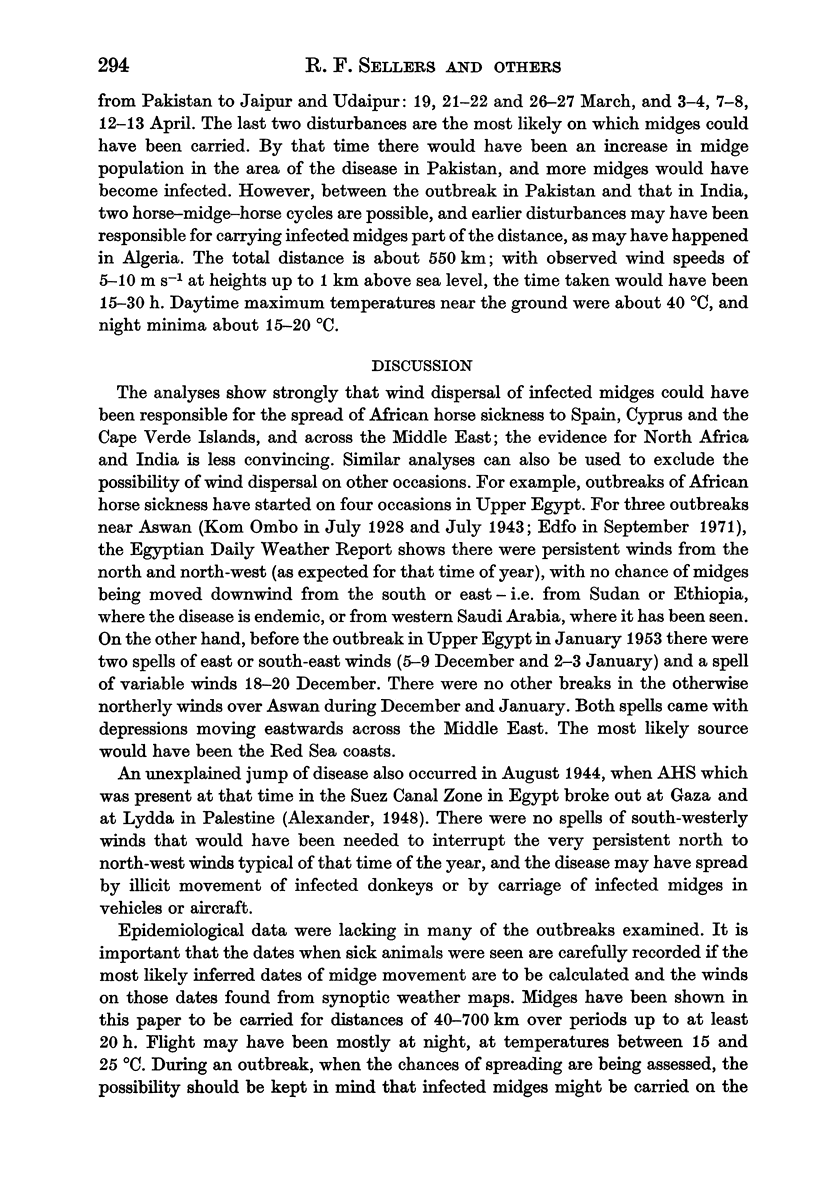
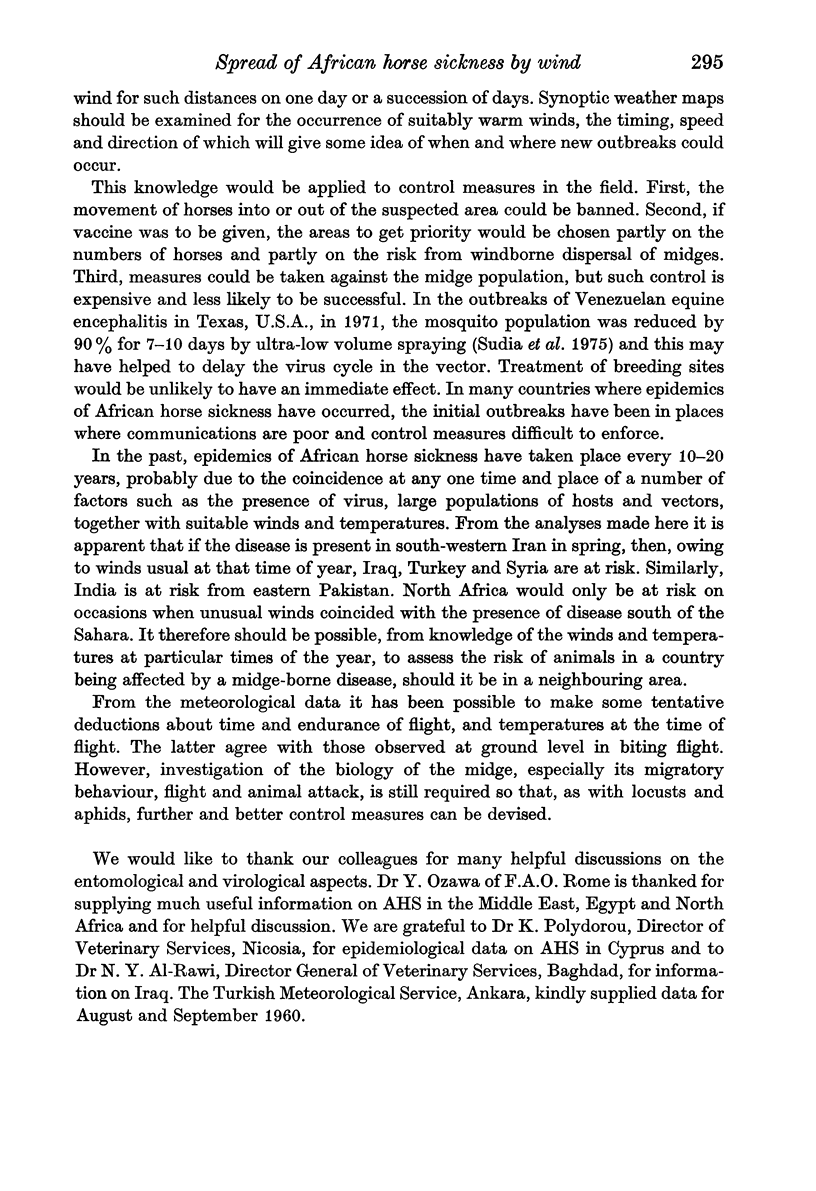
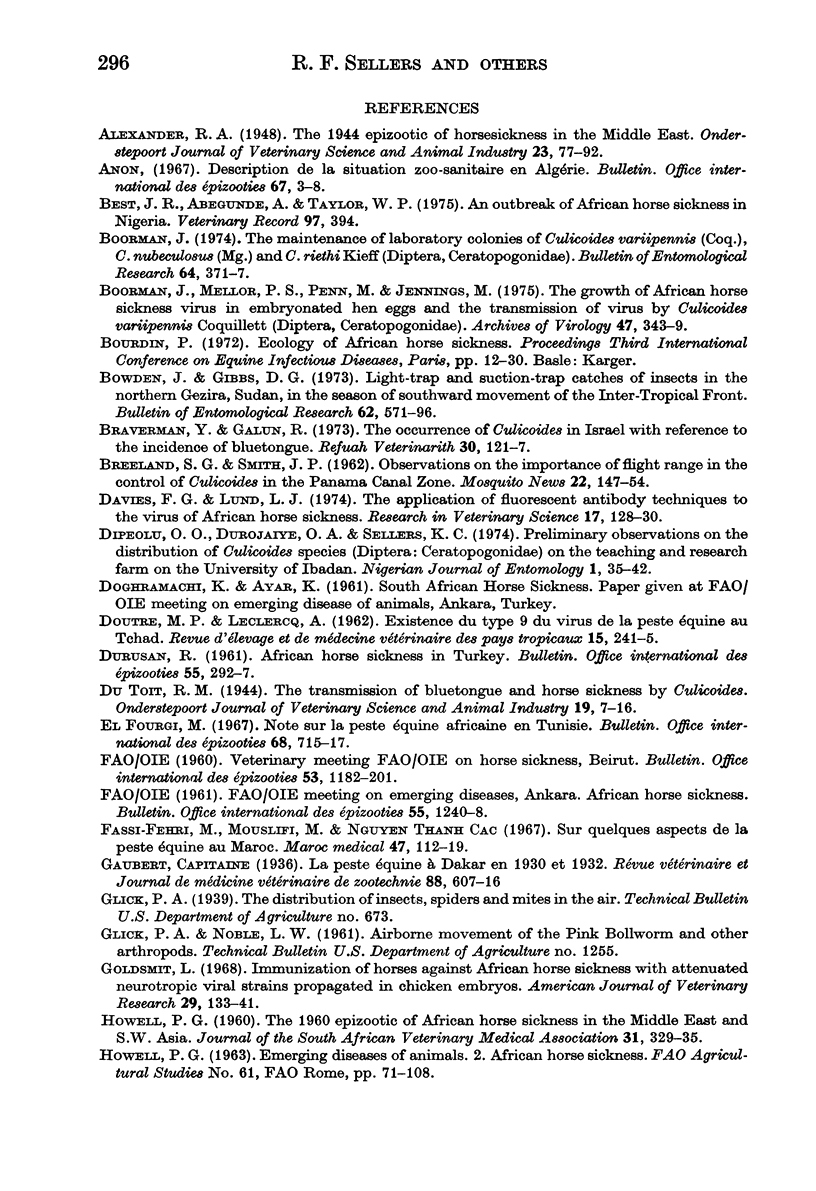
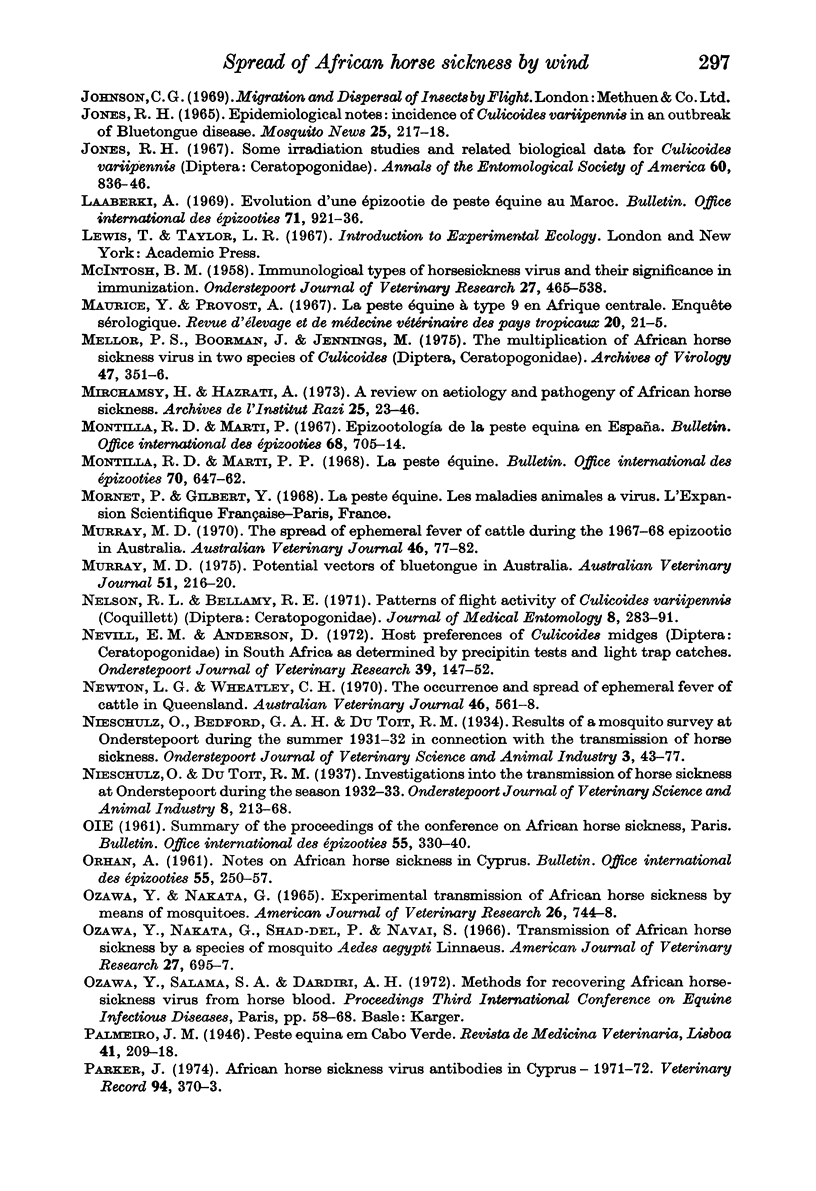
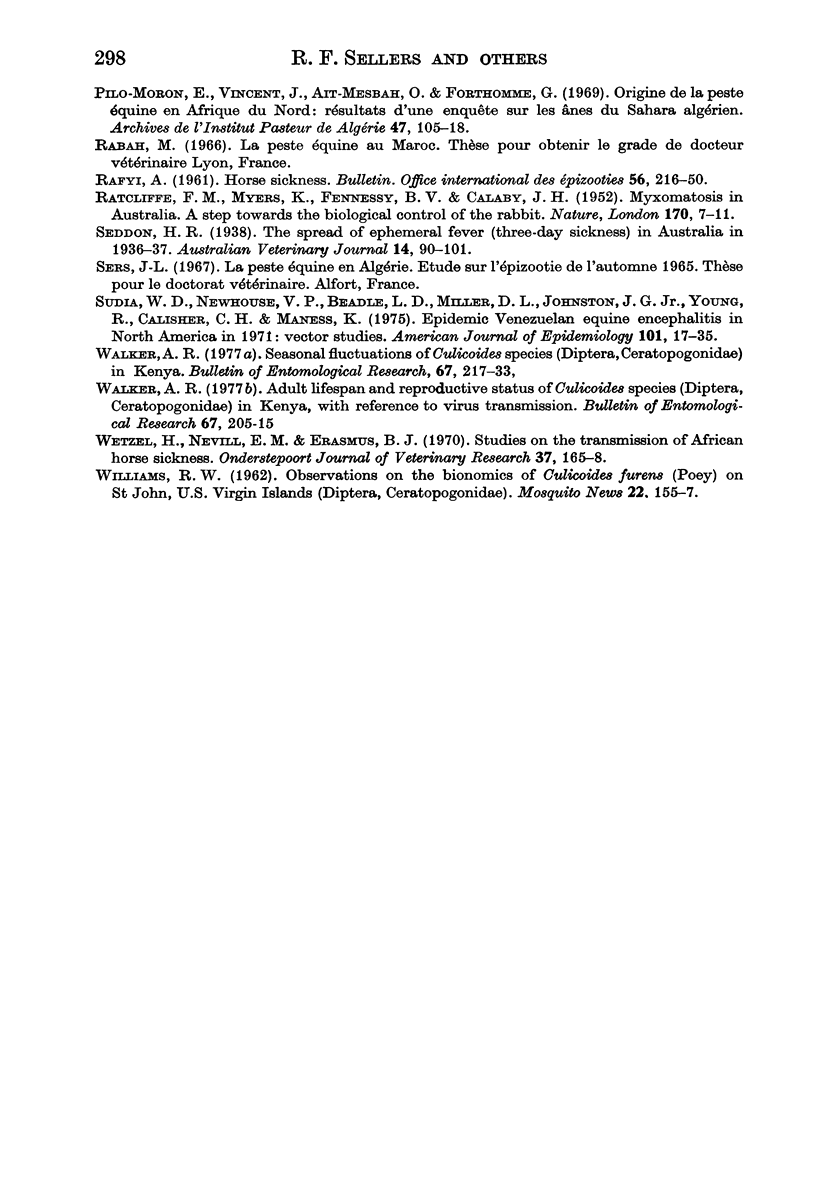
Selected References
These references are in PubMed. This may not be the complete list of references from this article.
- Best J. R., Abegunde A., Taylor W. P. An outbreak of African horse sickness in Nigeria. Vet Rec. 1975 Nov 15;97(20):394–394. doi: 10.1136/vr.97.20.394. [DOI] [PubMed] [Google Scholar]
- Boorman J., Mellor P. S., Penn M., Jennings M. The growth of African horse-sickness virus in embryonated hen eggs and the transmission of virus by Culicoides variipennis Coquillett (Diptera, Ceratopogonidae). Arch Virol. 1975;47(4):343–349. doi: 10.1007/BF01347975. [DOI] [PubMed] [Google Scholar]
- Davies F. G., Lund L. J. The application of fluorescent antibody techniques to the virus of African horse sickness. Res Vet Sci. 1974 Jul;17(1):128–130. [PubMed] [Google Scholar]
- Diaz Montilla R., Martí P. Epizootología de la peste equina en españa. Bull Off Int Epizoot. 1967 May;68(1):705–714. [PubMed] [Google Scholar]
- Diaz Montilla R., Paños Marti P. La peste équine. Bull Off Int Epizoot. 1968 May;70(1):647–662. [PubMed] [Google Scholar]
- Fassi-Fehri M., Mouslifi M., Nguyen Thanh Cac Sur quelques aspects de la peste équine au Maroc. Maroc Med. 1967 Feb;47(499):112–119. [PubMed] [Google Scholar]
- Goldsmit L. Immunization of horses against African horse-sickness with attenuated neurotropic viral strains propagated in chicken embryos. Am J Vet Res. 1968 Jan;29(1):133–141. [PubMed] [Google Scholar]
- Mellor P. S., Boorman J., Jennings M. The multiplication of African horse-sickness virus in two species of Culicoides (Diptera, Ceratopogonidae). Arch Virol. 1975;47(4):351–356. doi: 10.1007/BF01347976. [DOI] [PubMed] [Google Scholar]
- Murray M. D. Potential vectors of bluetongue in Australia. Aust Vet J. 1975 Apr;51(4):216–220. doi: 10.1111/j.1751-0813.1975.tb00060.x. [DOI] [PubMed] [Google Scholar]
- Nelson R. L., Bellamy R. E. Patterns of flight activity of Culicoides variipennis (Coquillett) (Diptera: Ceratopogonidae). J Med Entomol. 1971 Sep 30;8(3):283–291. doi: 10.1093/jmedent/8.3.283. [DOI] [PubMed] [Google Scholar]
- Nevill E. M., Anderson D. Host preferences of Culicoides midges (Diptera: Ceratopogonidae) in South Africa as determined by precipitin tests and light trap catches. Onderstepoort J Vet Res. 1972 Sep;39(3):147–152. [PubMed] [Google Scholar]
- Newton L. G., Wheatley C. H. The occurrence and spread of ephemeral fever of cattle in Queensland. Aust Vet J. 1970 Dec;46(12):561–568. doi: 10.1111/j.1751-0813.1970.tb06657.x. [DOI] [PubMed] [Google Scholar]
- OZAWA Y., NAKATA G. EXPERIMENTAL TRANSMISSION OF AFRICAN HORSE-SICKNESS BY MEANS OF MOSQUITOES. Am J Vet Res. 1965 May;26:744–748. [PubMed] [Google Scholar]
- Ozawa Y., Nakata G., Shad-del F., Navai S. Transmission of African horse-sickness by a species of mosquito, Aëdes aegypti linnaeus. Am J Vet Res. 1966 May;27(118):695–697. [PubMed] [Google Scholar]
- Parker J. African horse sickness virus antibodies in Cyprus--1971-72. Vet Rec. 1974 Apr 20;94(16):370–373. doi: 10.1136/vr.94.16.370. [DOI] [PubMed] [Google Scholar]
- RATCLIFFE F. N., MYERS K., FENNESSY B. V., CALABY J. H. Myxomatosis in Australia; a step towards the biological control of the rabbit. Nature. 1952 Jul 5;170(4314):7–11. doi: 10.1038/170007a0. [DOI] [PubMed] [Google Scholar]
- Sudia W. D., Newhouse V. F., Beadle I. D., Miller D. L., Johnston J. G., Jr, Young R., Calisher C. H., Maness K. Epidemic Venezuelan equine encephalitis in North America in 1971: vector studies. Am J Epidemiol. 1975 Jan;101(1):17–35. doi: 10.1093/oxfordjournals.aje.a112068. [DOI] [PubMed] [Google Scholar]
- Wetzel H., Nevill E. M., Erasmus B. J. Studies on the transmission of African horsesickness. Onderstepoort J Vet Res. 1970 Sep;37(3):165–168. [PubMed] [Google Scholar]
- el-Fourgi M. Note sur la peste équine africaine en Tunisie. Bull Off Int Epizoot. 1967 May;68(1):715–717. [PubMed] [Google Scholar]


